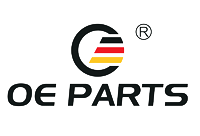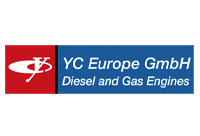Shentou provides on site services
such as factory audit and pre shipment
inspections in China
such as factory audit and pre shipment
inspections in China
shentouservices > Selected Reading > The Importance of Process Quality Capability Improvement to Ensure Stable Product Quality
Shentou Services
The Importance of Process Quality Capability Improvement to Ensure Stable Product Quality
Case Study – A Quality Complaint on Aluminum Die Casting Products
Case Description:
Customer A has been purchasing automotive thermostat housing parts made of aluminum alloy in China for a long time, After the parts arrive in Russia, they will be used on vehicles assembled by a Russian OEM. The products are delivered in industrial packaging for acceptance after die-casting, machining and surface treatment. Products are mostly transported by sea (steamer) or by land (train).
Customer A’s orders are based on demands of the OEM’s vehicle production which are stable regardless of the season. In selecting suppliers, the customer regards price as the leading factor and the supplier’s quality management system as the reference factor.
After the completion of production and inspection at the factory, no black mildew and black spots are found on the surface of the products. The goods are then packed and sent to Russia by either sea or land transportation at the instruction of the customer. The whole shipping process takes about one month.
Over the past two years, the surfaces of each batch of goods received by the customer have developed black mold spots and black patches in different areas, with different shapes, sizes, and color depths. The proportion of the parts having the black mold spots is relatively high. These black mildew spots and black spots could not be removed by hand or cloth, seriously affecting the overall appearance quality of the product. The customer has had to carry out chemical cleaning before using, which not only increases the cost but also affects the delivery time of supply to the OEM.
This case study looks at the quality complaints the supplier has received from the customer in the last two years. We will share our experience of their cause analysis and the corrective actions that have been taken.
Actions taken after receiving the complaints
After receiving the customer complaints, the supplier carried out various root cause analysis and took corrective actions, strictly following the complaint handling process. An 8D report was also submitted. No problems were found in self-inspections of the castings produced after rectification. But when the products were sent to the customer’s warehouse, the original problems still appeared and not completely solved. The customer and the supplier were both at a loss what to do next, so they turned to this author’s team seeking for help.
The author’s team made a detailed review of the customer’s complaints, the root cause analysis and rectification measures taken by the factory, and carried out a thorough observation and study of the production site according to the production process. We finally concluded that the main cause of this problem was the lack of drying treatment after the cleaning and passivation processes, and the secondary reason was that workers did not wear gloves in the packing process.
Generally speaking, there are many reasons for the surface blackening of aluminum die casting parts. There could be process execution deviations in many places in the production process. Non-compliance in a single process will already cause some quality problems, but when multiple issues were superimposed, and with the characteristics of aluminum die casting materials, the special environment in which the customer stores and uses the products, and some accidental factors in the long-distance transportation, serious quality issues will occur. Our conclusion is that to completely solve and prevent this problem, we must re-examine the whole product realization process, strictly enforcing the production process and continuously improving the process, so as to ensure the overall quality of the final product.
Using this case as an example, the author will analyze the many quality factors that may lead to black spots on the surface of die castings parts based on the whole production process, in an effort to demonstrate the importance of improving the process quality capability to the assurance of a stable product quality.
Before we start to analyze this case, interested readers can read “How to Ensure your Long-Term Suppliers’ Continuous Quality Compliance” in this year’s May, June, and July editions of the Newsletter at www.shentou.com which discussed the concept of “process quality capability”, also known as engineering capability and process capability. Referring to the ability to meet the quality requirement in the process, it is the ability to produce qualified products with processes under control. It measures the internal consistency in the process to achieve the minimum quality fluctuation under the most stable state.
Root cause analysis
Based on the writer’s understanding, there are two possible states for the mould and black spots on the surface of die casting parts: one is the pollution of the internal composition of the part, caused by the color, size and position of the die structure and the degree of the aluminum liquid being polluted and oxidized in the process of die casting, and appearing from the inside to the outside. The other case is that process disciplines are not strictly implemented during the shot blasting, machining, cleaning, passivating, air-tight testing, packing and delivering processes, resulting in the black mildew spots with different sizes, different positions, and different color depths on the surface.
Aluminum alloy is an active metal that will be naturally yet slowly oxidized in a dry environment, but it will be easily oxidized and eroded at higher temperature and humidity. This characteristic of aluminum alloy determines that any non-standard operating methods or environments in production, packing, storage, inspections and transportation will lead to the surfaces of the product being oxidized, with the appearance of black mildew and black spots.
This article mainly reviews the production process (raw material inspection – smelting – die casting – shot blasting – machining – cleaning/passivation – air tightness testing – packing – warehousing – shipping) of the aluminum die casting of thermostat housing and analyzes the influence (quality failure) and risks caused by the process, parameters, implementation compliance, as well as process change, verification and process quality capability. The goal is to explore and summarize the factors that may lead to black spots on the surface of die castings for references when purchasing aluminum die casting parts.
▍The impact of alloy material on black spot on the casting parts
Most die casting alloys are easily oxidized aluminum alloys, especially at high temperature. In the process of pouring and filling the die, it will oxidize and produce defects of oxide slag inclusion. During melting and taking the liquid, the longer the time, the more rolling of the alloy liquid, resulting in higher level of oxidation. Therefore, we need to pay more attention to the chemical composition of the aluminum alloys, apart from the product’s mechanical properties, in the selection of die casting alloy. Different chemical compositions have different anti-oxidation properties, which could lead to different degree of blacks on the product surfaces. Try to select, for production, alloys that are not easy to oxidize. We can also add a small amount, 0.1% – 0.3%, of sodium fluor aluminate or sodium fluorosilicate during slag cleaning and refining to prevent the oxidation discoloration of the die castings.
▌The impact of melting process on the black spot of castings
Melting is the first process of die casting. Melting is usually carried out by mixing the raw material (aluminum ingot) and the return material according to a certain proportion, and the material of aluminum ingot is set according to the customer requirements. In this process, we need to pay attention to: whether the material of the recycled material is the same as that of the aluminum ingot; whether the appearance is polluted; whether any non-aluminum alloys are mixed in; whether there are cutting oil or cutting fluid on the return materials; the proportion of recycled material added; whether the recycled material has zone management where the primary and secondary recycled materials are identified, and whether the primary and secondary recycled material are added at the same proportion. Those unclean aluminum alloy chippings must be cleaned or directly scrapped so as to avoid unclean substances mixed in the return material, causing pollution of molten alloy during smelting and producing black spots on the casting surface.
▌The impact of die casting process on black spots of castings
The die casting process is the key process of thermostat housing production. The compliance of process requirement in this process has a great impact on the internal quality and appearance of the product, with hidden potential risks of product failure. Therefore, in this process, we need to highly focus on the following factors: gating system and mold structure; mold opening time; mold cavity temperature; mold surface temperature at mold opening; mold release agent ratio; spray amount of mold release agent; whether soft water is used for mold release agent; whether the water content of mold release agent in mold cavity is blown clean or completely volatilized.
▌The impact of melting system and mold structure on black spots of castings
We need to pay attention to whether the gating system is far away from the gate, the eddy current, the large plane of the casting, and the mold cavity and the final filling parts, which may lead to the surface blackening of the die casting parts. The main reason is that there is more flue gas gathered in these parts, the contact time between the alloy liquid and the mold surface and the flue gas is long, and the amount of vortex entrapped gas in the alloy liquid is large, which aggravate the oxidation of the alloy liquid on the surface of the die casting and make the degree of adhesion of oil fume as well as carbon black on the mold surface worse;
Additionally, the flow speed of the alloy liquid is slow in the final filling area, the degree of erosion on the mold surface is light, and the oil fume accumulated on the mold surface cannot be washed away by the alloy liquid. For large plane castings, most of the alloy liquid is spray filling, which exceeds the velocity of flue gas flow and removal. The more the alloy liquid contacts and mixes with the flue gas, the more the amount of oil fume gas in the alloy liquid, the easier the alloy liquid is oxidized and polluted, and the phenomenon of blackening appearing on the surface can be even more serious.
Therefore, improving the gating system of the mold, improving the position, size and direction of the inner gate and overflow slot, changing the flow direction and flow rate of the alloy liquid, changing the generation, flow direction and discharge status of the oil fume are all effective measures to reduce and avoid the blackening of the casting.
The blackening conditions in die casting process can be summarized as: blackening on the surface, showing oil smoke; blackening on the surface, showing flake shape; blackening on the surface, showing black spot.
When the casting surface seems to have black smoke with irregular shape and inconsistent depth, this is because in the process of alloy liquid’s filling the mold cavity, when the release agent meets the high-temperature alloy liquid, it burns insufficiently, causing a large amount of smoke gathering in the mold cavity, and the smoke are not completely and quickly discharged from the mold cavity. The accumulated oil fume pollutes the surface area of the alloy liquid and the mold cavity, resulting in the blackening of the oil fume on the surface of the die casting.
When the surface of the die casting is blackened, like a cloud piece, irregular shape, but the color of black is uniform, this is because the surface of the mold cavity is contaminated by the carbon black and oil fume of the mold release agent, and the carbon black on the mold surface is printed on the surface of the casting, resulting in a shape close to the blackening pattern on each surface of the die casting, with lighter black color but darker than lampblack.
When the black spots on the surface of the die casting parts are different in size, approximately round in shape and dark in color, this is because the black particles formed by the release agent are on the surface of the mold or casting, with each black particle causing black on the casting surface. These black particles may be mold release agent deposits or aggregates, which are relatively viscous and are not easy to be completely decomposed at high temperature.
▌The impact of the proportion of mold release agent and its spraying amount on the black spots of castings
There are two points we should pay attention to when preparing the release agent. One is the selection of the release agent supplier. The other is the selection of good quality release agent that not only can prevent oxidation and corrosion on the surface of the die casting but also affect the quality of the casting parts when they are in use. Therefore, we should choose the release agent which has good mucositis prevention, high temperature resistance, low flammability and less oil fume.
The configuration of release agent is usually based on manufacturer suggested proportion and the production characteristics of the company. Generally, the proportion of release agent is about 1:120-150, with the proportion adjusted depending on the product structure. For example, for thin and deep mold cavities, it is easy to stick to the mold, so the spraying amount of the release agent could not be reduced but the concentration could be reduced by increasing the proportion of water to, for example, 1:140.
Pure water or soft water should be selected as the water used to prepare the release agent. Hard water should not be used because the metal ions in hard water will not only affect the stability, coating and release performance of the agent, but also cause the casting to be oxidized and corroded.
In die casting production, spraying release agent is usually used to rapidly demold and improve production efficiency. In the actual production, the die-casting machines of general manufacturers usually include fully automatic machines (automatic pouring, picking-up and spraying release agent) and semi-automatic machines (manual pouring, picking-up, spraying agent). The fully automatic die-casting machines are mainly used for mass production, while the semi-automatic die-casting machines are mainly used for small batch productions. In cases where the molds used in production are bad, workers often increase the amount of spray agent to reduce the difficulty of fetching parts.
If the agent is over-sprayed or the concentration too thick, the agent will accumulate in the mold cavity after spraying. The oil, grease, wax, organic silicone oil and other organic substances and moisture in the agent will produce a lot of fumes when they meet the high temperature alloy liquid. The excessive fumes not only seriously pollute the surface of the alloy liquid and the surface of the mold cavity, but also make the spray-filled alloy liquid oxidize rapidly, causing black spots and blackening on the surface and inside of the casting.
▌The impact of shot peening on the surface of castings having black spots
At present, the shot peening process at die casting companies mostly uses stainless steel shot, zinc shot and aluminum shot. The effect of shot peening with varying materials is different. Most companies choose stainless steel shot for shot peening, but the used shots are not regularly filtered and dust-treated. Therefore, the alumina dust will adhere to the surface of the steel shot which has been worn down due to long-term use. When shot peening strikes the casting parts, the steel shot will also strike the alumina powder on the surface of the casting, resulting in the overall color darkening of the casting surface.
In addition, the water and dust in the air will also be sprayed on the surface of the casting during shot peening. At the same time, the casting will heat up by the shot, and the rising temperature will accelerate the oxidation reaction on the surface of the casting, so the casting may soon turn black.
Therefore, we should wear gloves when operating the castings after shot-peening. If we touch the castings directly by hand, especially in summer, the surface of the castings will have hand marks which cause blackening. Because the die casting is in a high temperature state after demoulding, a layer of oxide film will form on the surface quickly. After shot peening, the oxide film disappears, and the casting surface is more prone to oxidation defects. In this case, the handling of the die casting parts after shot peening should be dustproof, moisture proof, waterproof, oil proof, sealed and packaged, and the surface treatment should be carried out quickly.
▌The impact of the machining process on having black spots on the surface of casting
The impact of oxidation blackening on the surface of castings produced by machining processes is mainly reflected in the cutting fluid used, the protection during storage and transportation of the machining process and the temperature and humidity of workplace.
In winter, when the die castings are transported from the die casting workshop to the machining workshop or stored, if there is air conditioner in the room and the temperature is significantly higher than outdoor, the water vapor in the air will condense the frost on the surface of the castings, which will cause rapid oxidation of the castings. Therefore, when the castings are just transported to the room, it is suggested that the package not be opened or parts not processed right away, so as to prevent the casting from frosting and oxidation blackening due to long time storage. In the high temperature season, the temperature of the products in the processing air conditioned room is relatively low, so they cannot be directly transferred to the warehouse with higher temperature. They must be transferred to a warehouse buffer zone for temperature transition, otherwise the products will be corroded by condensation water and produce black spots.
Aluminum alloy is amphoteric metal, it will change color when it meets either acid or alkaline material, so we should use neutral cutting fluid when choosing cutting fluid in machining.
▌The impact of cleaning and passivation treatment on having black spots on the surface of castings
After machining, the die castings should be cleaned and passivated as soon as possible to prevent the products from oxidation and blackening in the air.
The process includes the following: ultrasonic cleaning (oil removal) – secondary cleaning (removal of residual ultrasonic liquid on the surface) – surface conditioning (activation) – secondary cleaning (removal of surface conditioning liquid on the product surface) – surface passivation (phosphating) (uniform protective film is formed on the product surface) – three times cleaning (the first two times are for the removal of residual passivation liquid on the surface, and the last one is further cleaning to ensure that the product is clean, in order to facilitate product drying) – drying – offline.
In the whole process of cleaning and passivation, we should pay attention to the frequency of cleaning solution replacement; temperature and pH value of cleaning solution; pH value, temperature and passivation time of passivation tank; and drying temperature and time and other process parameters.
If it is not cleaned or cleaned thoroughly, the surface of die casting parts will be left with corrosive substances such as release agent, cutting fluid, passivation fluid and water stains, which will accelerate the speed of mildew forming and blackening of aluminum alloy die casting parts. Improper selection of cleaning agent or cleaning process will also cause corrosion and oxidation of die castings. Therefore, after machining, die castings should be cleaned, passivated (if applicable) and dried immediately.
▌The impact of air tightness test on having black spots on casting surface
Different customers have different requirements for various products. The product purchased by the author’s customer is thermostat housing, which is an aluminum die casting machine part. The customer requires air tightness test to prevent product leakage.
For air tightness test, the detection method generally used is water test, with water as the detection medium. The parts are placed in a special fixture and then immersed in water. It is then filled with a certain pressure of compressed and the pressure is held for a period of time. It is a good product if there is no bubble on the water surface. After the air tightness test, the product is taken out from the water and stored at the prepared working stations.
At this time, we should pay attention to the position and direction of the product, and the direction that is easy to drain the accumulated water should be downward, otherwise the accumulated water cannot be drained out, which will cause water stain corrosion and blackening in the depression of the product. The natural drying environment temperature, humidity and drying time are also reasons for water stain corrosion and blackening, the author thinks that drying treatment should be carried out to eliminate the risk of water stain corrosion and blackening caused by excessive natural drying.
▌The impact of packaging on having black spots on the surface of castings
Packaging is generally decided by customers. Different customers require different packaging. The author observed that there are several packaging methods.
A. Placing the product in an outer box which has a large plastic bag inside. The products are placed in layers inside the large plastic bag, with each product touching with each other. Cardboard is used to separate each layer. After the placement, 1-2 small bags of desiccant will be placed on the top layer, then the mouth of the large plastic bag is twisted at the top of the box and the box cover is sealed.
The advantage of this packaging is that the cost is the lowest and the most easy to operate; the disadvantage is that there will be collision and friction between each product in transit, resulting in oxidation and blackening. This packing is suitable for most customers with large order quantities and stable orders.
B. Customizing blister tray according to each product. Blister tray size should be designed based on the size of the outer box. Placing a certain number of products on each blister tray and placing the blister tray in the packaging box in layers and isolating each layer with cardboard. The advantages of this packaging are that the products can be well protected, there is no collision between them, and the risk of oxidation and blackening is small. The disadvantages are that the packaging cost is high and so is the recycling cost of blister trays after the client receives the goods. This packing method is suitable for customers with small batch or small order quantity but with complex product structure and high appearance requirements.
C. Placing all the products in an outer box, put a big plastic packing bag inside the outer box, and then place the products in layers in the large plastic packing bag. Separate each layer into several small spaces with slotted partition to place each product, making sure each layer is isolated with cardboard. After the placement, 1-2 small bags of desiccant are put in the top layer, then twist the bag opening in the top layer of the packing and seal the packing box. The cost of this packaging method is higher than that of the first one, but it is the easiest to operate. The disadvantage is that the quantity of each box is reduced. This packing method is suitable for most customers who can accept the slight increase of packing cost, and with large quantity and stable order.
Precautions for packaging process: packing boxes and other chipboard partitions should be kept dry; packing plastic bags should not be too thin; desiccant used for packing should meet the requirements; packers should wear gloves correctly for operation; and parts should be held and put away lightly when packing.
▌The impact of storage and transportation on having black spots on casting surface.
Die castings are highly susceptible to oxidation and erosion under high temperature and humidity. After the surface is oxidized, the color will become gray, even black or moldy. So the die castings that have been cleaned and packed should be delivered as soon as possible to avoid oxidation, blackening and mildew caused with long-term stacking in the humid warehouse. Therefore, it is necessary to have good anti-oxidation measures in place and good warehouse management.
First of all, we should require the warehouse have dehumidification device to keep the warehouse well ventilated. Open the window for ventilation in sunny weather, timely close the window in rainy days or rainy seasons and apply necessary dehumidification treatment.
Secondly, the warehouse should have material storage shelves with appropriate pallets. Die castings should not be placed directly on the ground or at lower levels of the shelves. For the products that are not shipped in time, they should be sealed and dehumidified with desiccant. Special protective measures should be taken in rainy seasons to prevent the castings from moisture and mildew. For example, the products can be put in small plastic bags or stored in plastic bags as large as the outer packaging boxes, and then sealed with desiccant.
Third, cartons, partitions and other packaging materials should be stored at the top of the shelf. Damp cartons, paperboards and circulating boxes should not be used, plastic circulating boxes and plastic boxes should be used instead. After packing, the boxes should be sealed immediately and the top layer should be covered.
Finally, for aluminum die castings with steel and iron inserts, antirust oil must be applied on the inserts, meanwhile, the flow process of die casting parts should be speed up.
For castings with long storage time, it is necessary to open the box for inspection before delivery to make sure everything is fine.
As for the protection in the process of transportation, we should keep the parts protected against rainwater, and pay special attention to the weather conditions of sea and ground transportation as well as during the rainy season transportation. If there is a failure of rain protection measures resulting in the castings being wet, the batch should be immediately isolated and re-washed and dried. Castings can be released for shipment only after being placed for 7 days without rust and blackening.
For castings parts transported by sea and land or delivered in rainy season, plastic bags can be added for packaging, and the castings can be sealed in small plastic bags, or they can be stored in a plastic bag as large as the outer box with sufficient amount of desiccant.
From the above analysis we can see that there are many reasons and possibilities that lead to the blackening of aluminum die-casting. We could only ensure the quality of the final product by monitoring each production process, especially the important ones, and taking corresponding control measures for the quality problems in an effort to continuously meet the customers’ requirements for enduring and stable product quality.
This article was first published in November & December of 2020, and January, February, March & April of 2021
Contact:
Europe Lukas Lu
Mobile: +49-162 1998116
Email: gx.lu@shentou.com
China Sean Young
Mobile: +86-13923415730
Email: s.young@shentou.com
keywords:Product Development Project Management Services Post COVID-19 Factory Audits







